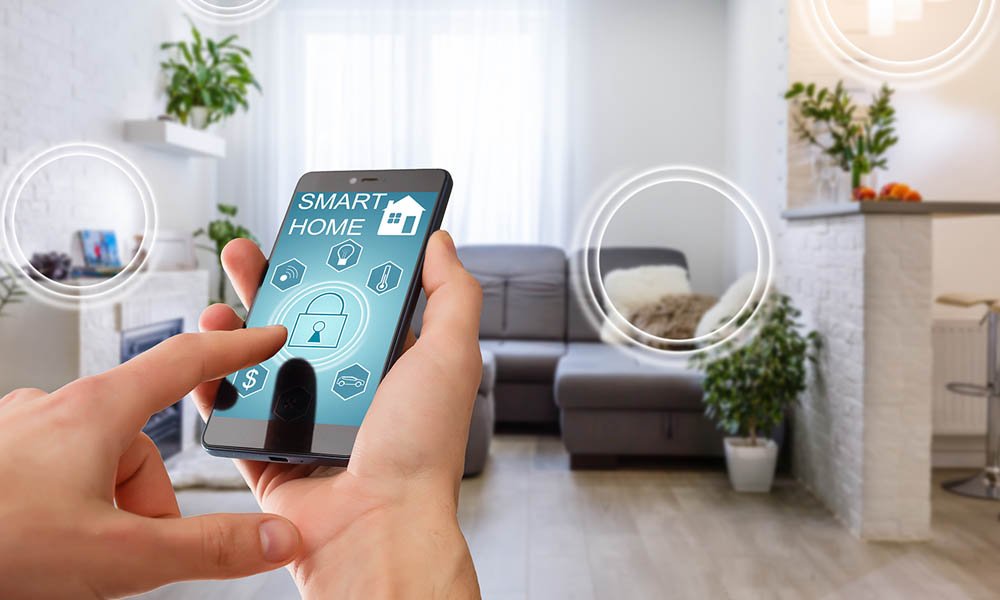Technology has redefined expectations. It has enabled companies to reduce costs and improve productivity. For cable internet users, bundle packages powered by Spectrum have provided comfort and convenience with the fact that users don’t bother about how much is Spectrum internet cost. Moreover, smart home solutions are increasingly becoming popular.
Speaking of home automation, do you know that more than 30% of households in the U.S. use smart gadgets to power their homes. The growing popularity of smart homes shows how far the world has come in terms of technology acceptance and innovation.
What Is Smart Home Automation?
Automation involves the use of technologies and tools to deliver goods with minimal human intervention. Smart home automation uses smart tools like Wi-Fi air conditioners and web-based locking systems to monitor and control home attributes. Smart homes enable owners to add comfort and convenience to their lives. A prime example is that of a gate entry system that can provide your home with security and ease of use.
Examples of Smart Home Automation
The advent of smart speakers paved the way for companies to experiment with smart appliances. Smart speakers like Amazon’s Echo and Google Home Assistant provided users greater control over their homes. These devices provide a greater sense of autonomy over home attributes like temperature, light, energy, etc. Other examples of smart home appliances include smart ACs, smart locks, smart cameras, etc.
The Benefits
In addition to offering comfort and convenience, smart home solutions provide greater autonomy over home attributes. Though the technology has yet to become mainstream, it continues to grow in popularity with each passing day.
The best thing about these appliances is that they seamlessly integrate with other smart devices like smartphones, laptops, and tablets. For example, if you have an Apple smart device in your home, you can easily control it using your iPhone or iPad. That said, here are some benefits of using smart home solutions:
Convenience
Perhaps the biggest benefit of using smart home solutions is convenience. Smart home apps allow users to control a wide range of home attributes from anywhere and at any time. In theory, you have to learn how to operate the app. Learning the functionalities of smart home solutions is one step towards accepting technology as the way forward.
Flexibility
Smart home solutions provide greater flexibility in terms of accommodating new tech tools. New technologies arrive. New technologies arrive, allowing people to equip themselves with state-of-the-art tech tools. Home automation solutions allow homeowners to make the most out of their indoor and outdoor spaces. Home automation apps seamlessly integrate with smart devices such as smartphones, tablets, and laptops.
Remote Access
Home automation solutions allow users to control their home attributes from anywhere and at any time. For example, if you’re out and want to check your room temperature, you can use a smart app to regulate the temperature. Similarly, smart security cameras allow users to monitor the activity within and outside their house from their smartphones.
Energy Efficiency
Another great advantage of smart home solutions is that they allow users to save on energy bills. Smart televisions, air conditioners, and locks are energy efficient. Moreover, smart home temperature tools can suggest the best energy consumption methods to homeowners. Smart lights and bulbs allow users to regulate the lighting of their rooms.
What Do the Statistics Say About Smart Home Automation?
Smart home automation is a multi-billion-dollar industry. Households around the world are expected to spend more than $19 billion on smart home automation systems. Smart speakers, on the other hand, are expected to grow by 55% in the next year. It is worth mentioning here that more than 30% of broadband households in the U.S. own a smart speaker.
Experts see unprecedented growth in the demand for smart home automation solutions in the next few years. This is because of the increasing acceptance of technology as a means to provide convenience and comfort. More and more consumers around the world will shift to smart home solutions in the future. This will provide more revenue for smart home service providers.
Conclusion
The future is smart. This is no hyperbole but a fact. The current trends show that tech tools will continue to dominate the home attributes market for years to come. Smart home products are becoming more affordable due to their increased acceptance and availability.


